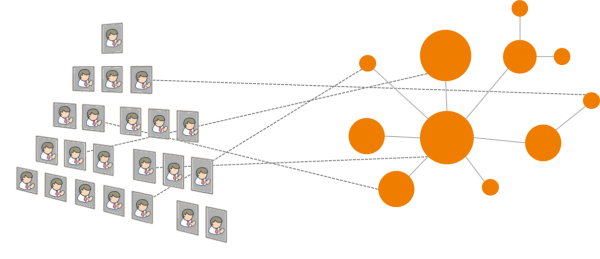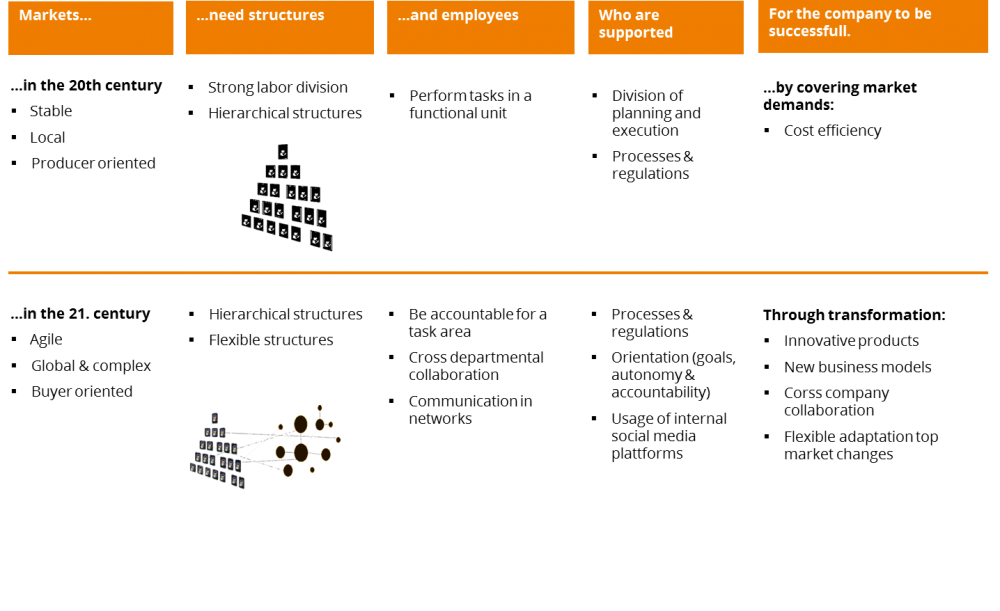Internal Community Management/Background
Why are communities and community management important topics today? To answer this question we have to look back to the beginning of the 20th century. Back then market entry barriers were very high and companies were competing in local markets.
Therefore markets were stable an the main challenge was ot provide enough products in with a suitable quality. To accomplish that goal methods for the functional division of labour were successfully introduced. With this division of labour came the hierarchic organizational design that is well known and distributed today.
Since then the market environment changed particulary with the dawn of the internet and the possibilities of digital data processing. Companies are operating in global markets with more complex products and service and dropping market barriers. To cope with these environmental parameters classical hierarchic organizations are not flexible enough. Organizations respond since quite a while with the implementation of communities of practice, committees, task forces and projects.
But this transformation is no a either-or-decision: "hierarchies won‘t be replaced but rather extended by social technology enabled communities". Prof. Kotter (Harvard) calls this a "dual operating system".
Concepts and moviements like "dual operating system" (Kotter), "holacracy" (Robertson), "smart simplicity" (Morieux), "management 2.0" (Hamel), and "enterprise 2.0" (McAfee) underline the necessity of flexible and self-organizing structures as success factors for companies in the 21st century. Modern corporate social networks and the resulting possibility of virtual communities are part of the toolkit to push networking and communication for cross-silo topics, in teams and existing departements. Again the main issues in a nutshell:


